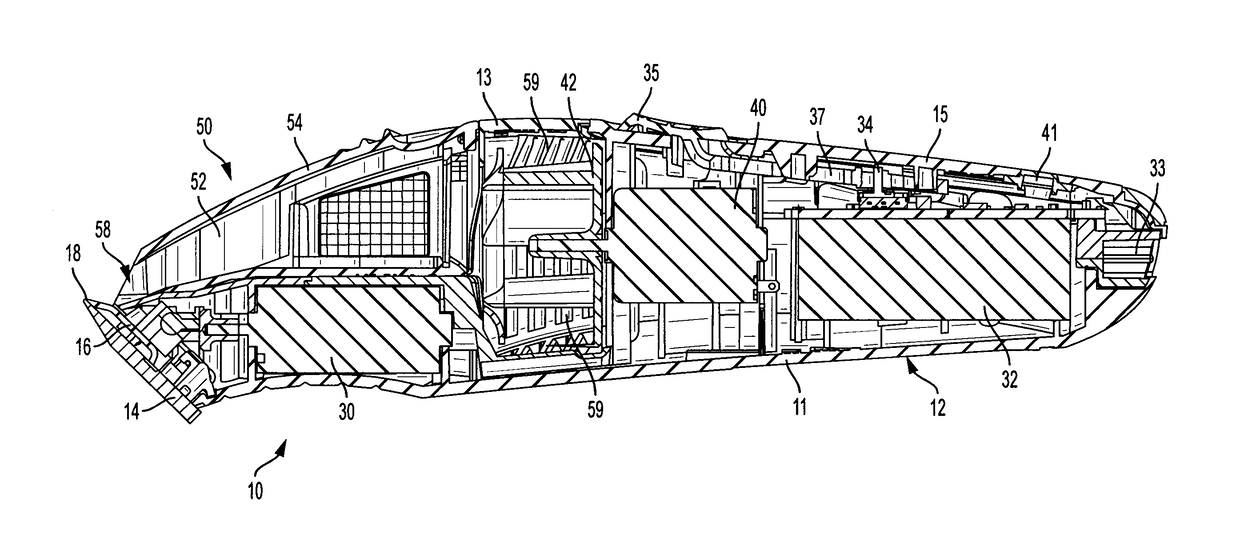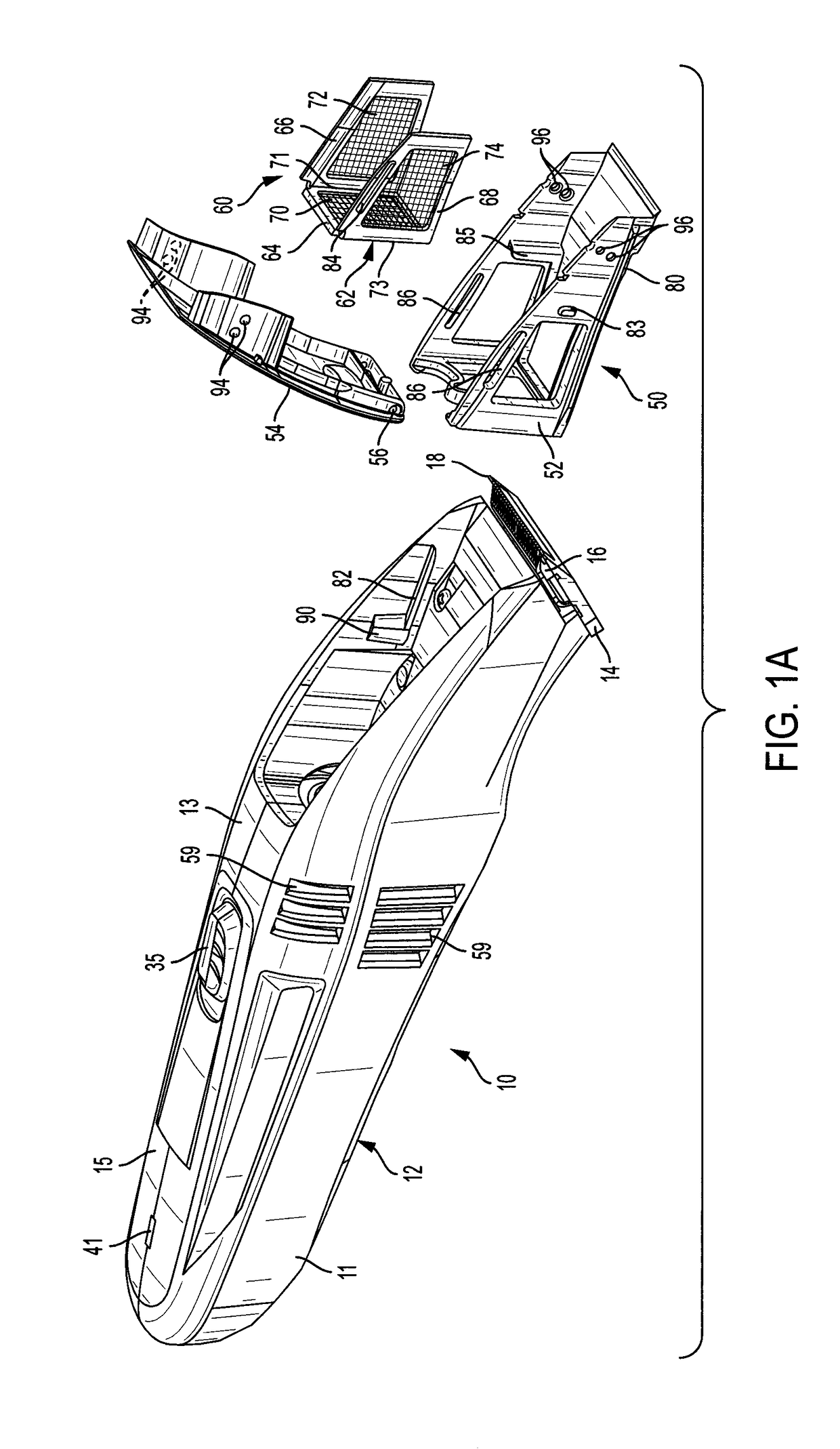Vacuum systems for hair clippers
a vacuum system and hair clipper technology, applied in the direction of metal working devices, etc., can solve the problems of long hair stuck in the air inlet, small debris can be lost, etc., and achieve the effect of better trapping of small debris and high air flow
- Summary
- Abstract
- Description
- Claims
- Application Information
AI Technical Summary
Benefits of technology
Problems solved by technology
Method used
Image
Examples
Embodiment Construction
[0027]As seen in FIGS. 1 and 2, a hair clipper 10 has a housing 12 that includes a bottom case 11, a top lid 13 and a switch panel 15. The hair clipper 10 also has a stationary blade 14 and a reciprocating blade 16. Both blades have complimentary rows of cutting teeth at an end 18. The cutting blades 14, 16 are secured to the bottom case 11 of the housing 12 in any suitable manner, such as retaining ribs or screws. The blades are secured outside of the housing.
[0028]The reciprocating blade 16 is driven back and forth by a motor 30 (FIG. 2), which is powered by a battery 32 through an electrical switch 34. A charging port 33 can be provided, as well as an LED 41 to indicate the battery state, power status and the like.
[0029]A vacuum system includes another motor 40 having a fan 42 that generates air flow in the housing, as will be described. The motor 40 is also powered by the battery 32 through the switch 34. The switch 34 is part of a switch assembly that controls power to the moto...
PUM
 Login to View More
Login to View More Abstract
Description
Claims
Application Information
 Login to View More
Login to View More - R&D
- Intellectual Property
- Life Sciences
- Materials
- Tech Scout
- Unparalleled Data Quality
- Higher Quality Content
- 60% Fewer Hallucinations
Browse by: Latest US Patents, China's latest patents, Technical Efficacy Thesaurus, Application Domain, Technology Topic, Popular Technical Reports.
© 2025 PatSnap. All rights reserved.Legal|Privacy policy|Modern Slavery Act Transparency Statement|Sitemap|About US| Contact US: help@patsnap.com



